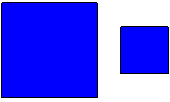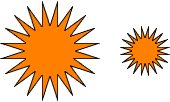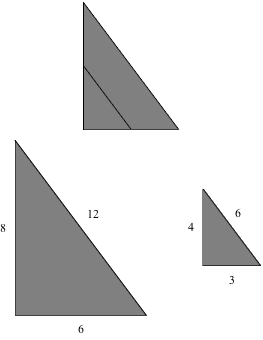Similar figures are always the same shape, but not the same size. They have equal angles but not equal side lengths.

Check out a big square and a small square. They're both squares because they have four sides and four equal angles, but the sides aren't the same length. These squares are similar: they have the same shape but they are different sizes. Computers are great at creating similar shapes–think: shrink, enlarge, and resize. Here are a few more examples of similar figures:


When two shapes are similar, their corresponding sides are proportional (see ratios and proportions). Corresponding sides mean the two sides that are in the same place on the figures, like the hypotenuses of the two triangles above. Sides AB and XY are also corresponding sides, as are sides AC and XZ. While the sides are different lengths, the ratio of corresponding sides is equal. In these similar triangles, if AB divided by XY equals 3, then AC divided by XZ also equals 3.
Sometimes similar figures can be disguised. In the figure below there are two similar triangles, one within the other. They are the exact same shape but they are different sizes.

These are both right triangles. The hypotenuse of the big triangle is 12 and the hypotenuse of the small triangle is 6. The ratio of them is 12/6 or 2.
If the ratios of the other pairs of corresponding sides are 2 then the triangles are similar. Let's find out. The ratio of the longer legs is 8/4 = 2. And the ratio of the shorter legs is 6/3 = 2. Wahoo! The ratios for each side on these triangles are equal so the triangles are similar.